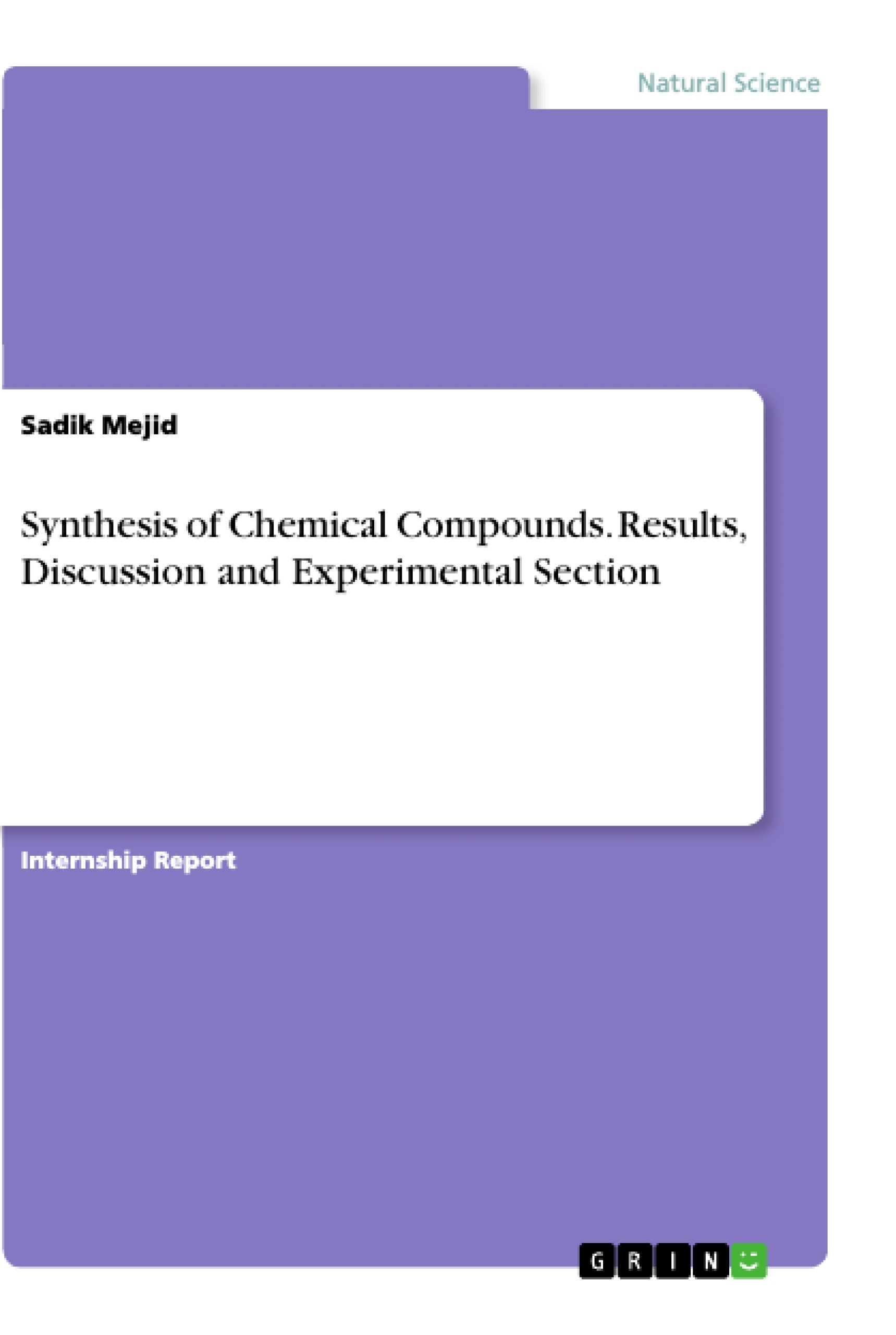A literature survey via Reaxys revealed 2 references in which this compound was described as the product. The first synthesis has been published by Corey in the Journal of Organic Chemistry in 1988: N-(benzyloxycarbonyl)-(S)-proline (3) was synthesized in 75.2% yield from proline by reaction with benzyl chloroformate in an aqueous solution at 0–5°C. E. J. Corey, J. Org. Chem., Vol. 53, No. 12, 1988, 2861-2863 seemed to be the best choice for its high yield.
The protection of proline with benzylchloroformate gave a colourless solid, which recrystallized from petrolium ether. The yield of 75.2% is below that reportedin the literature (96%). The purity of the product could not be proofed, since no enough analytic data are available. For the product (3) no GC-MS was recorded, because of its carbon acid group that might damage the mass spectrometry system.
The hydroxide ion of NaOH deprotonates the NH-group of proline to form water and the electron pair of the nitrogen anion undergo a nucleophilic attack to the carbon atom of the carbonyl-group to give (3). The sodium cation forms with chloride anion sodiumchloride that prcipitates. An example for the application of the cyclic amino acid is its use as a pharmaceutical intermidiate, which is used for the synthesis of Eletriptan, a drug for the treatment of migriane.
Inhaltsverzeichnis (Table of Contents)
- 1 Results and discussion
- 1.1 Synthesis of N-(benzyloxycarbonyl)-(S)-proline (3) [1]
- 1.2 Synthesis of N-(benzyloxycarbonyl)-(S)-proline Methyl Ester (5)[1]
- 1.3 Synthesis of 2-amino-3-methylbutanol (Valinol) (7) [3]
- 1.4 Synthesis of (S)-4-isopropyl-2-oxazolidinone (10)
- 1.5 Synthesis of di-tert-butyl 1-(2,6-diisopropylphenyl)-hydrazine-1,2-dicarboxylate (11) [9]
- 1.6 Synthesis of 2-(2,6-diisopropyl-phenyl)hydrazin-1-ium chloride (12) [9]
- 1.7 Synthesis of dimethyl o-tolylboronate (14) [10]
- 1.8 Synthesis of 1-methyl-4'-methoxybiphenyl (16) [11]
- 1.9 Synthesis of 2-iodobenzoic acid (18)[¹³]
- 1.10 Synthesis of 1,1,2,2-tetraphenylethylen (20) [14]
- 1.11 Synthesis of 5-hydroxy-3-oxo-5-phenylpentanoic acid methyl ester (23) [16]
- 2 Experimental Section
- 2.1 General Procedures
- 2.2 Synthesis of N-(benzyloxycarbonyl)-(S)-proline (3)[1]
- 2.3 Synthesis of N-(benzyloxycarbonyl)-(S)-proline methyl ester (5)[¹]
- 2.4 Synthesis of 2-amino-3-methylbutanol (Valinol) (7) [3]
- 2.5 Synthesis of (S)-4-isopropyl-2-oxazolidinone (10)
- 2.6 Synthesis of di-tert-butyl 1-(2,6-diisopropylphenyl)-hydrazine-1,2-dicarboxylate (11) [9]
- 2.7 Synthesis of 2-(2,6-diisopropyl-phenyl)hydrazin-1-ium chloride (12) [9]
- 2.8 Synthesis of dimethyl o-tolylboronate (14) [10]
- 2.9 Synthesis of 1-methyl-4'-methoxybiphenyl (16) [11]
- 2.10 Synthesis of 2-iodobenzoic acid (18) [13]
- 2.11 Synthesis of 1,1,2,2-tetraphenylethylen (20)[14]
- 2.12 Synthesis of 5-hydroxy-3-oxo-5-phenylpentanoic acid methyl ester (23)[16]
Zielsetzung und Themenschwerpunkte (Objectives and Key Themes)
This experimental module in advanced organic chemistry aims to detail the synthesis of various chemical compounds. The procedures, yields, and characterization methods are described for each synthesis. The work focuses on practical laboratory techniques and the application of established synthetic methods.
- Synthetic methodologies for specific organic compounds.
- Analysis of reaction yields and purity of synthesized products.
- Application of spectroscopic and chromatographic techniques.
- Comparison of experimental results with literature data.
- Practical application of air and moisture sensitive chemical handling.
Zusammenfassung der Kapitel (Chapter Summaries)
1 Results and discussion: This chapter presents the results of the synthesis of several organic compounds. Each synthesis is described individually, including the chosen method, reaction scheme, yield, and purity analysis. The discussion section compares the obtained results with the literature data, analyzing deviations and potential causes. The chapter showcases a range of synthetic approaches and analytical techniques, highlighting challenges and successes in each synthesis. Particular attention is paid to the characterization of the products using various analytical methods like GC-MS.
2 Experimental Section: This chapter provides detailed experimental procedures for the synthesis of each compound discussed in Chapter 1. It includes comprehensive descriptions of general procedures for handling air and moisture-sensitive chemicals, solvent usage, chromatographic methods, and analytical techniques. Each synthesis section is meticulously detailed, specifying the reactants, reaction conditions, workup procedures, and purification steps. The level of detail allows for the exact reproduction of the experiments.
Schlüsselwörter (Keywords)
Advanced organic chemistry, synthesis, chemical compounds, reaction mechanisms, yields, purity, characterization, spectroscopy, chromatography, GC-MS, experimental procedures, literature comparison.
Frequently Asked Questions: Advanced Organic Chemistry Experimental Module
What is the purpose of this experimental module?
This advanced organic chemistry module details the synthesis of various chemical compounds. It covers procedures, yields, characterization methods, practical laboratory techniques, and the application of established synthetic methods.
What key themes are addressed in this module?
The module focuses on synthetic methodologies for specific organic compounds, analysis of reaction yields and purity, application of spectroscopic and chromatographic techniques, comparison of experimental results with literature data, and practical application of air and moisture-sensitive chemical handling.
What specific compounds are synthesized in this module?
The module covers the synthesis of numerous compounds, including but not limited to: N-(benzyloxycarbonyl)-(S)-proline, N-(benzyloxycarbonyl)-(S)-proline methyl ester, 2-amino-3-methylbutanol (Valinol), (S)-4-isopropyl-2-oxazolidinone, di-tert-butyl 1-(2,6-diisopropylphenyl)-hydrazine-1,2-dicarboxylate, 2-(2,6-diisopropyl-phenyl)hydrazin-1-ium chloride, dimethyl o-tolylboronate, 1-methyl-4'-methoxybiphenyl, 2-iodobenzoic acid, 1,1,2,2-tetraphenylethylen, and 5-hydroxy-3-oxo-5-phenylpentanoic acid methyl ester.
How are the results and discussion presented?
Chapter 1 presents the synthesis results of each compound individually, including the method, reaction scheme, yield, purity analysis, and a comparison with literature data. It analyzes deviations and potential causes, highlighting challenges and successes using techniques like GC-MS.
What details are provided in the experimental section?
Chapter 2 provides detailed experimental procedures for each compound's synthesis. This includes general procedures for handling air and moisture-sensitive chemicals, solvent usage, chromatographic methods, analytical techniques, reactants, reaction conditions, workup procedures, and purification steps. The level of detail allows for the reproduction of experiments.
What analytical techniques are used?
The module utilizes various spectroscopic and chromatographic techniques for the characterization and purity analysis of the synthesized compounds. GC-MS is specifically mentioned.
What are the key takeaways from this module?
The module provides practical experience in advanced organic synthesis, emphasizes rigorous experimental procedures and analysis, and highlights the importance of comparing experimental results with existing literature.
What are the keywords associated with this module?
Advanced organic chemistry, synthesis, chemical compounds, reaction mechanisms, yields, purity, characterization, spectroscopy, chromatography, GC-MS, experimental procedures, literature comparison.
Where can I find a detailed table of contents?
The provided HTML includes a complete table of contents outlining the specific syntheses covered in each chapter.
What is the intended audience for this module?
The module is intended for academic use, focusing on the analysis of themes in a structured and professional manner.
- Quote paper
- Sadik Mejid (Author), 2015, Synthesis of Chemical Compounds. Results, Discussion and Experimental Section, Munich, GRIN Verlag, https://www.hausarbeiten.de/document/475233



